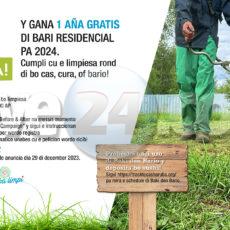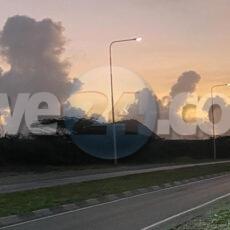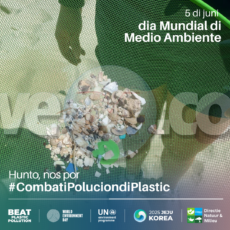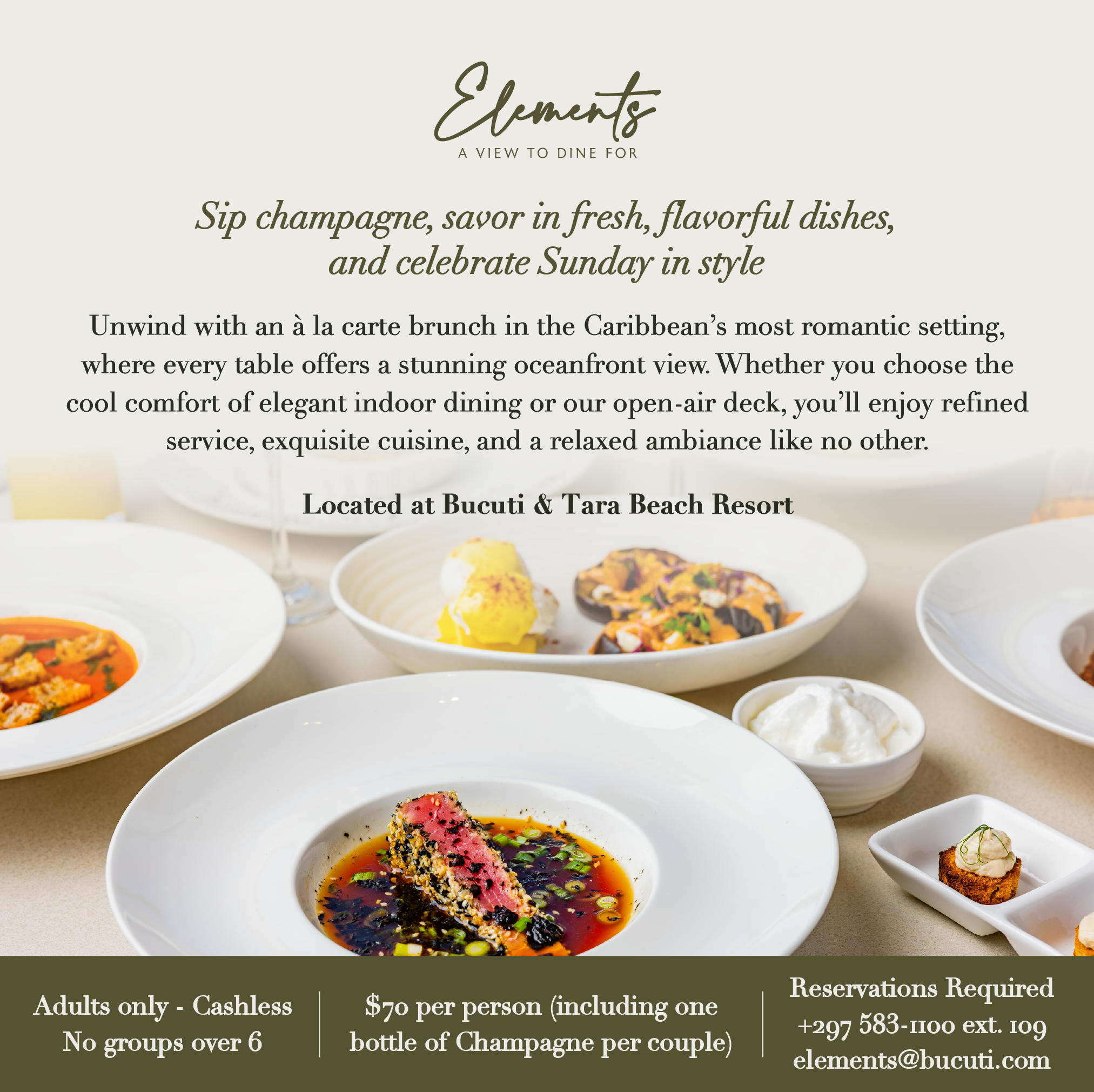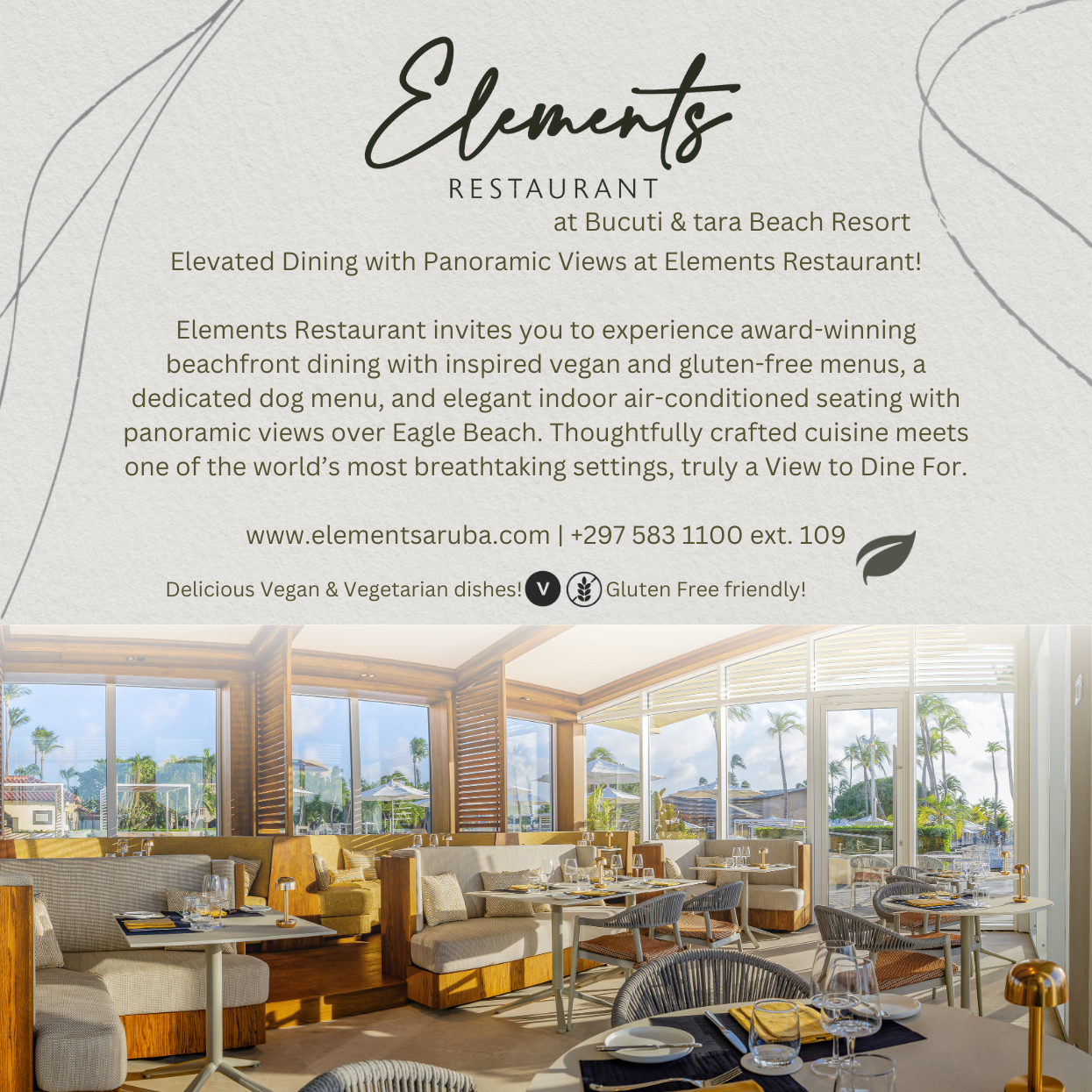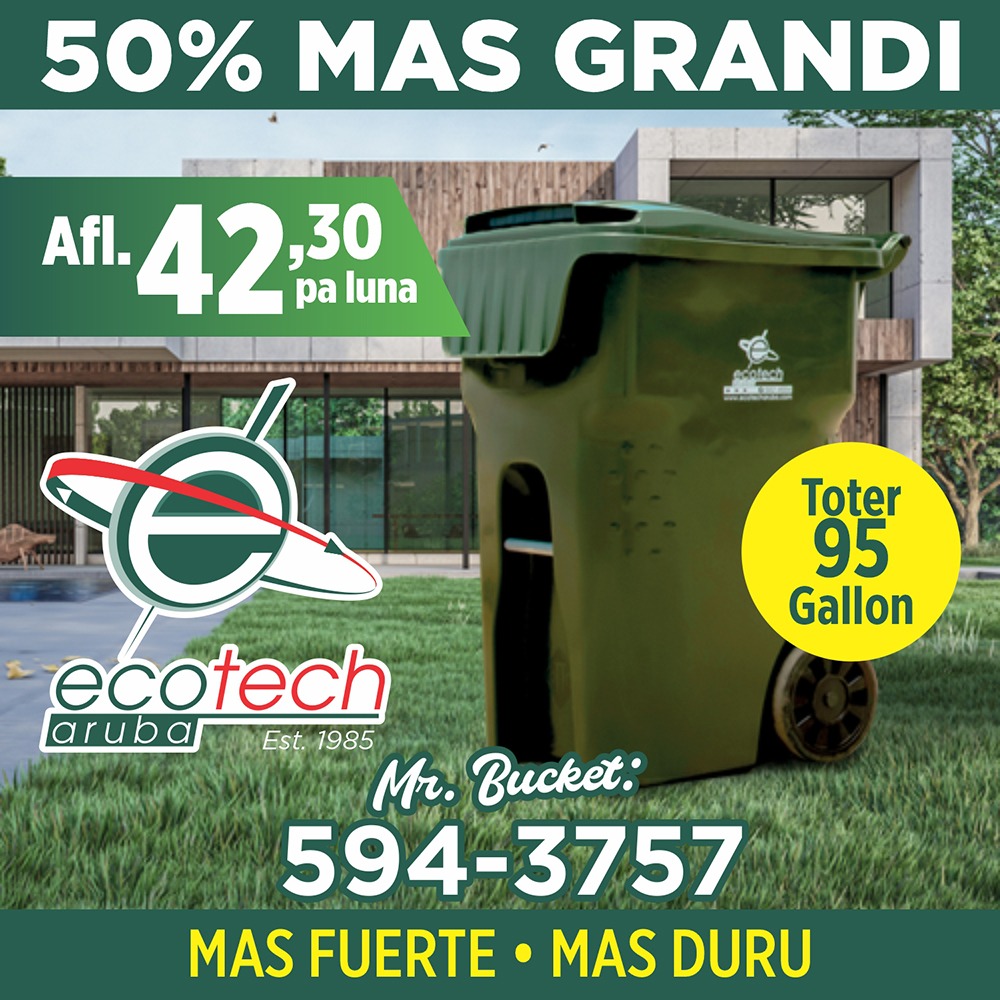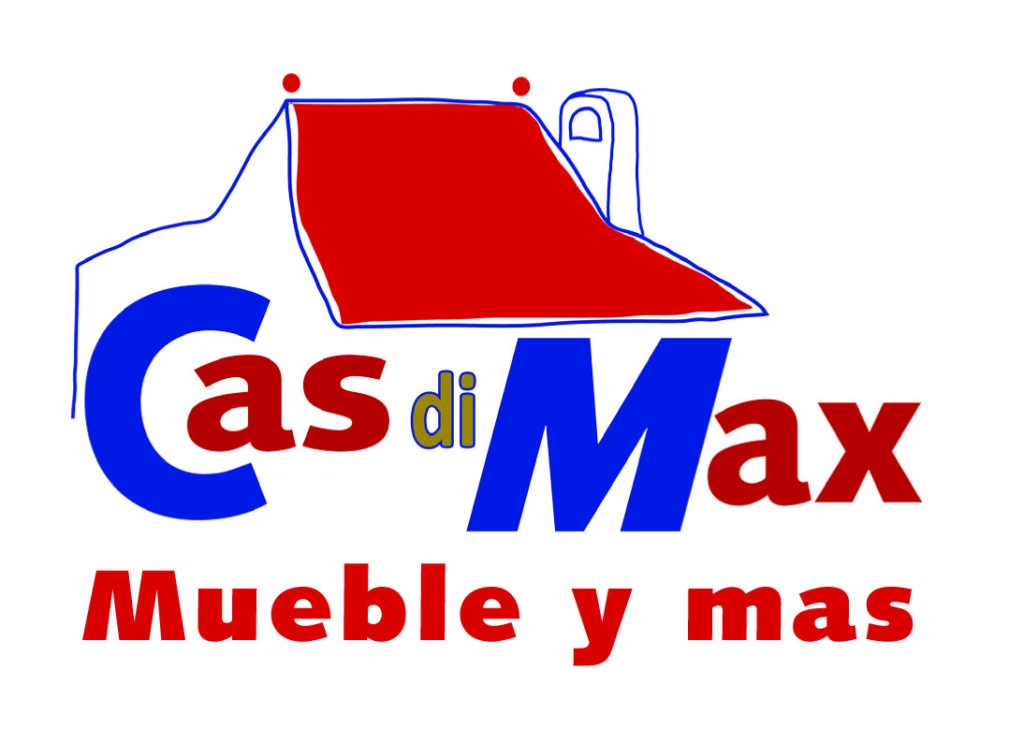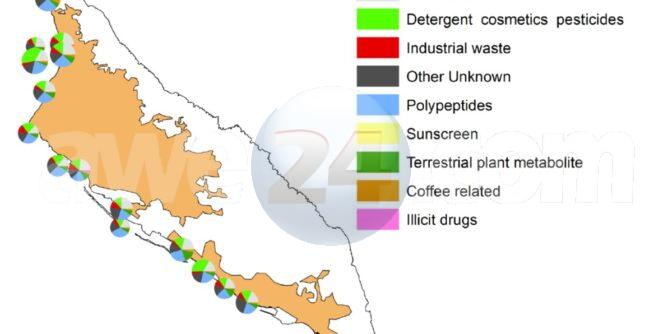
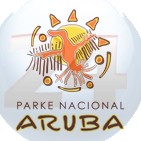
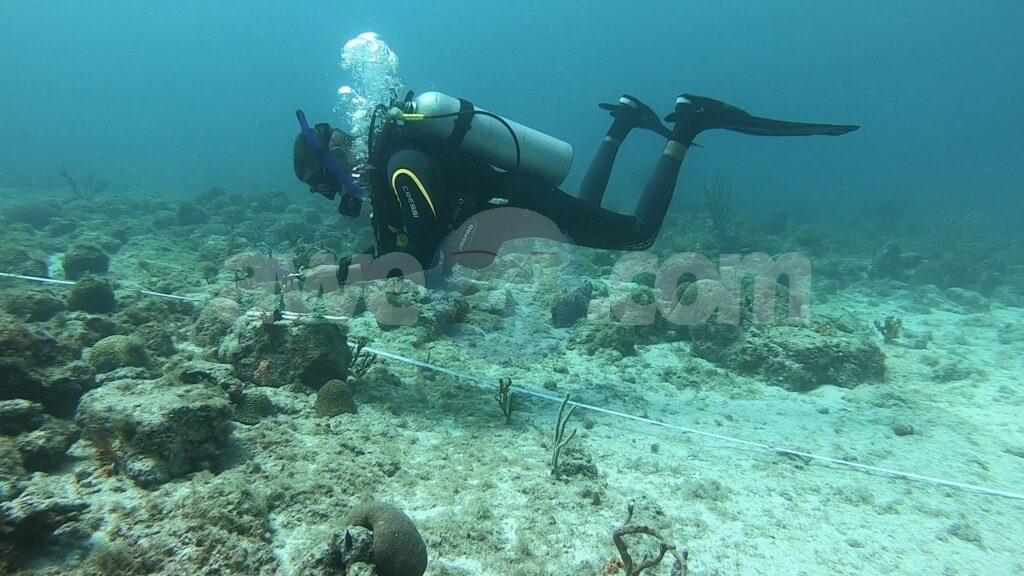


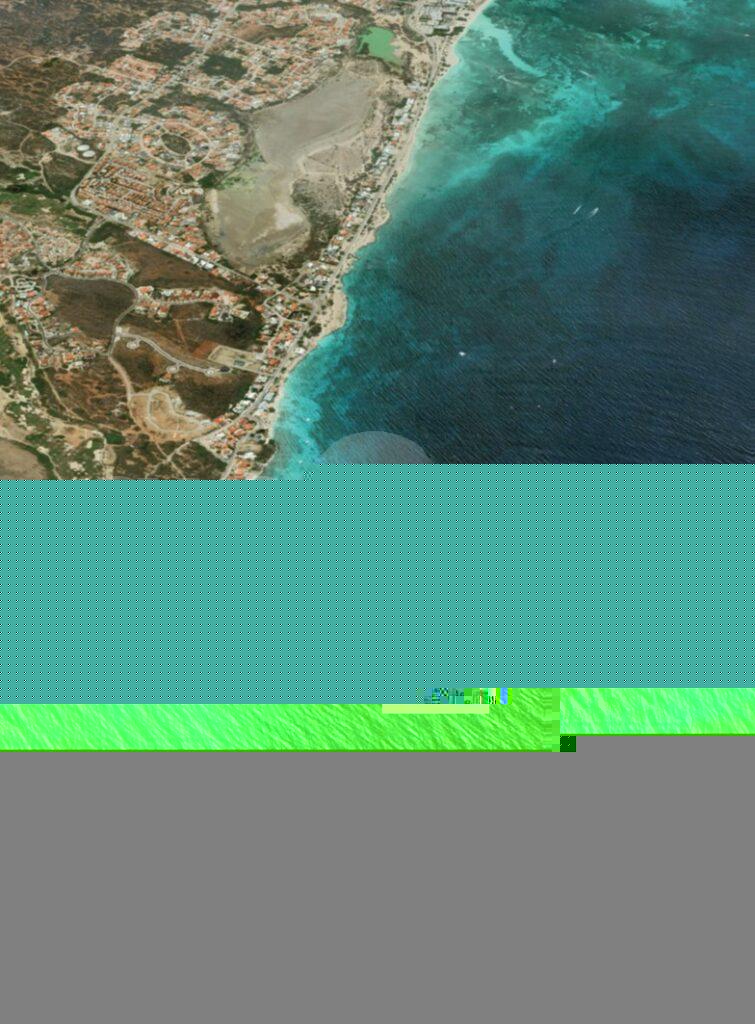
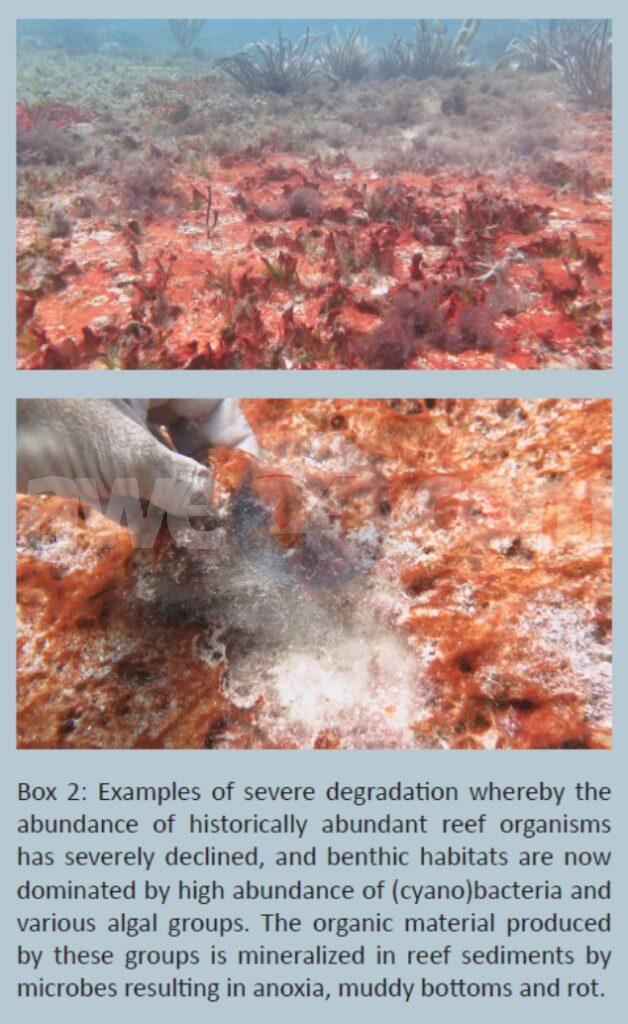
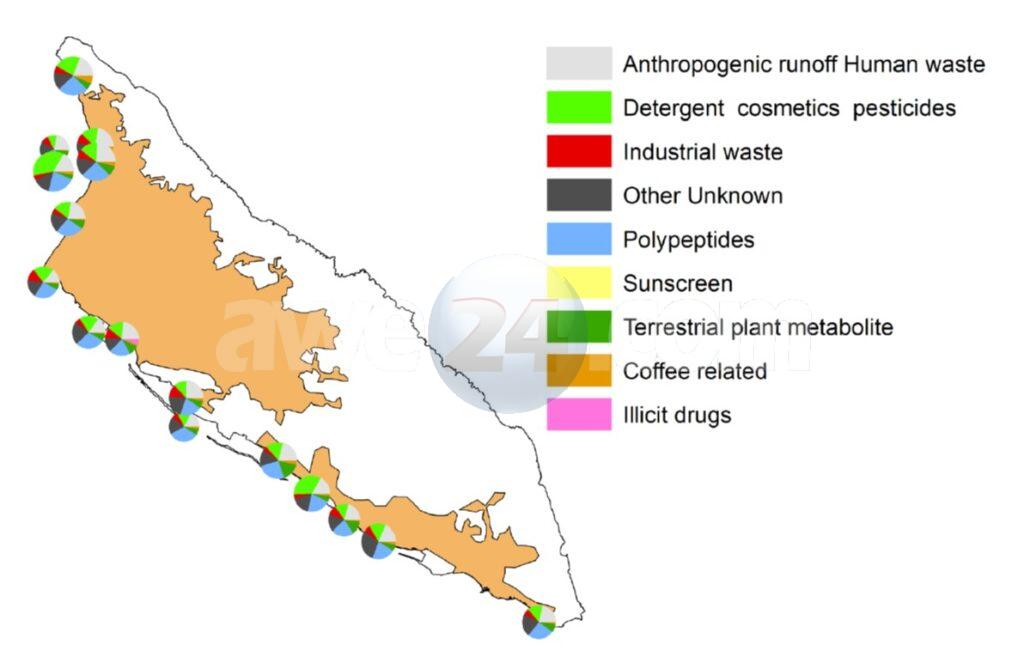
ORANJESTAD, ARUBA – Den e ultimo simannan e resultadonan y conclusionnan di e sondeo di nos rifnan di coral y calidad di awa conduci pa e fundacion ‘Caribbean Research and Management of Biodiversity’ (CARMABI) a wordo publica via diferente medionan. Pa Fundacion Parke Nacional Aruba (FPNA) e informacion di estudionan asina tasumamente importante pa asina adapta manehonan di areanannatural basa riba evidencia di situacionnan actual. Pa hopi tempo caba FPNA, y otro organisacionnan cu ta dedica naconservacion di naturalesa, a indica cu nos lama tadeteriorando rapidamente. Awor esaki ta documenta den un forma objetivo door di un instituto reconoci den nos region.
Den e raport di CARMABI e estado di Aruba su rifnan di coral ta clasifica pa ta den condicion critico te rasonabel. Paun rif di coral y su ecosistema ta resiliente pa menasananmanera horcan, cambio di clima, malesanan etc., rifnan mesterta den un estado bon of hopi bon pa por restaura su mes. Adicionalmente, e ecosistema asocia cu e rifnan ta den undesbalansa, unda tin relativamente hopi alga y pisca herbivoro(incluyendo gutu), pero tin poco invertebrato (calco, kreeft, bushi di lama) y pisca predatorio (jampou, mero, snapper, tribon) cu mester mantene e ecosistema den balansa. Cu eestado actual di nos ecosistema di rifnan ta den condiciondegrada, Aruba su ecosistema di rifnan ta cerca di un colapseecologico, caminda e bida marino no lo por carga su mes mas,y nos lo tin lamanan morto.
Tin diferente menasanan pa nos bida marino, manera cambio di clima, especienan invasivo (lionfish, yerbe invasivo, coral invasivo), coral bleaching, malesa di coral, polucion, recreacion y extraccion iregula, trafico maritimo y su impactonan, pero tambe polucion for di tera den forma di desperdicio y awa di pos, y polucion kimico (fertilisante, pesticidio, herbicidio, detergente, medicinal, verf, azeta, bateria, etc.) cu ta yega nos lama via e diferente RWZI, awasero, basha directo, of via grondwater. Algun di e formanan di polucion aki a wordo identifica den e raport di CARMABI di ta presente den consentracionnan halto y no saludabel pa nos medio ambiente marino. Mayoria, si no tatur, di e impactonan aki ta e consecuencia directo of indirecto di e crecemento no structura y no sostenibel di turismo (cu taresponsabel pa mayoria di e polucion kimico) y nos poblacioncreciente cu nos isla a pasa den e ultimo decadanan. E crecemento exponential aki a sosode sin consideracion di ecapacidad di carga di nos infrastructura, social, medioambiente y ecologia of un planificacion espacial pa reduciimpacto of presionnan.
E aumento di menasanan y e degradacion di nos medioambiente y naturalesa ta un resultado cumulativo di algundecada, y e no ta un problema cu por wordo resolvi den un dia. E lo tuma colaboracion y decadanan di accion restorativopa yega na solucionnan necesario pa segura un medioambiente sano y salvo pa naturalesa y ser humano. Pero tinpasonan importante cu Aruba por tuma pa reduci e riesgo pamas degradacion y pa crea un ambiente unda naturalesa, y cuesey e calidad di nos awanan, por recupera. Aruba mester cambia completamente pa un desaroyo sostenibel, undadesaroyo y crecemento economico ta wordo evalua basa riba ecapacidad di carga (ecologico) di e isla. Mester cambia e focus completamente pa turismo di calidad halto y impacto abou, hunto cu e desaroyo di otro pilarnan economicosostenibel.
Adaptacion apropia pa desaroyo sostenibel lo ilustra enecesidad pa un moratorium inmediato ariba desaroyo nacosta y camber di hotel nobo (incluyendo esnan firma caba), y lo solamente permiti renobacion di hotel existente cu ta reducinan capacidad. Mester eleva maneho di desperdicio y awasushi pa cumpli cu rekesito actual y internacional y cuadra cue poblacion cu ta contribui na esaki (ambos local y turista). Cada contribuyente por ta parti di e solucion door di reducinan desperdicio y awa sushi y stimula door di un structuraunda e productor di polucion ta paga. Leynan, decretonan, maneho y control ariba esaki di parti autoridad mester regula e impacto humano cu tin riba medio ambiente y naturalesa. Pacada ciudadano of organisacion cu kier tuma responsabilidad pa nan propio marca ambiental, mester tin suficiente informacion local disponibel den forma di curso y certificacion di sostenibilidad.
Un parke marino ful rond Aruba tambe por forma parti di e solucion pero mester wordo combina cu esfuersonan integral pa reduci e menasanan y polucion cu ta bin di tera. Una bes e menasanan di tera ta mitiga, planificacion espacial marino y zonanan como parti di un parke marino ful rond di e isla ta crucial pa restaura ecosistema y biodiversidad y mitigaimpacto humano riba e medio ambiente marino. Sistema di boei por preveni daño di ancramento y guia recreacionhumano pa cierto zona unda e actividad lo tin menos impacto. Cierto areanan por wordo aloca y manteni pa proyecto di conservacion marino manera rifnan artificial pa restaura coral, mitiga yerbe invasivo pa restaura nos yerbenan nativo y otrotechnologianan inovativo pa recuperacion di nos bida marino.
Pa restauracion di coral e ta esencial pa e medio ambientemarino no ta bou presion continuo di polucion di tera of actividad humano no sostenibel. Segun e raport diCARMABI, a resta solamente un sitio na Aruba su costa zuidwest cu tin un medio ambiente marino relativamentesaludabel door di e coriente di awa limpi cu ta bin di e oceanona e punta mas pazuid di nos isla na Sero Colorado. Lamentablemente ta di cuestiona con largo e area aki lo kedasaludabel cu e desaroyonan turistico cu ta tumando lugar ribae costa eynan actualmente, caminda via grondwater y e aumento di actividadnan di bishitante por impacta e bidamarino. Pa e motibo aki tur desaroyo mester no solamenteconsidera e area directo di construccion, pero tambe e impactoriba areanan (natural) den besindario como tambe e impactoindirecto cu e desaroyo lo tin riba Aruba, un isla cu ya caba ta demasiado desaroya. Cada desaroyo nobo ta hisa e presionriba nos recursonan (natural) door di un aumento di recreacion, poblacion, consumidor, trafico, polucion, etceterAruba mester aplica precaucion pa tur desaroyo y haci un evaluacion adecuado di e impacto social y ambiental prome, incluyendo plan di mitagacion di impacto y evaluacion di alternativonan, prome cu duna permiso pa un desaroyo. Asina, FPNA ta aplica y encourasha maneho basa ariba evidencia, miho practicanan prueba, y e principio di precaucion pa determina accionan sostenibel pa logra un balansa real entre bienestar economico, social y ecologico door di mitigaimpactonan humano no sostenibel y duna naturalesa espaciopa restaura su mes.
RELATO DI PRENSA
Pa publicacion inmediato.
*PAPIAMENTO*
FPNA: E resultado di e estudio di CARMABI no ta sorprendente, pero si mester wordo inclui den nos maneho basa riba evidencia di termino largo.
ORANJESTAD, ARUBA – Den e ultimo simannan e resultadonan y conclusionnan di e sondeo di nos rifnan di coral y calidad di awa conduci pa e fundacion ‘Caribbean Research and Management of Biodiversity’ (CARMABI) a wordo publica via diferente medionan. Pa Fundacion Parke Nacional Aruba (FPNA) e informacion di estudionan asina tasumamente importante pa asina adapta manehonan di areanannatural basa riba evidencia di situacionnan actual. Pa hopi tempo caba FPNA, y otro organisacionnan cu ta dedica naconservacion di naturalesa, a indica cu nos lama tadeteriorando rapidamente. Awor esaki ta documenta den un forma objetivo door di un instituto reconoci den nos region.
Den e raport di CARMABI e estado di Aruba su rifnan di coral ta clasifica pa ta den condicion critico te rasonabel. Paun rif di coral y su ecosistema ta resiliente pa menasananmanera horcan, cambio di clima, malesanan etc., rifnan mesterta den un estado bon of hopi bon pa por restaura su mes. Adicionalmente, e ecosistema asocia cu e rifnan ta den undesbalansa, unda tin relativamente hopi alga y pisca herbivoro(incluyendo gutu), pero tin poco invertebrato (calco, kreeft, bushi di lama) y pisca predatorio (jampou, mero, snapper, tribon) cu mester mantene e ecosistema den balansa. Cu eestado actual di nos ecosistema di rifnan ta den condiciondegrada, Aruba su ecosistema di rifnan ta cerca di un colapseecologico, caminda e bida marino no lo por carga su mes mas,y nos lo tin lamanan morto.
Tin diferente menasanan pa nos bida marino, manera cambio di clima, especienan invasivo (lionfish, yerbe invasivo, coral invasivo), coral bleaching, malesa di coral, polucion, recreacion y extraccion iregula, trafico maritimo y su impactonan, pero tambe polucion for di tera den forma di desperdicio y awa di pos, y polucion kimico (fertilisante, pesticidio, herbicidio, detergente, medicinal, verf, azeta, bateria, etc.) cu ta yega nos lama via e diferente RWZI, awasero, basha directo, of via grondwater. Algun di e formanan di polucion aki a wordo identifica den e raport di CARMABI di ta presente den consentracionnan halto y no saludabel pa nos medio ambiente marino. Mayoria, si no tatur, di e impactonan aki ta e consecuencia directo of indirecto di e crecemento no structura y no sostenibel di turismo (cu taresponsabel pa mayoria di e polucion kimico) y nos poblacioncreciente cu nos isla a pasa den e ultimo decadanan. E crecemento exponential aki a sosode sin consideracion di ecapacidad di carga di nos infrastructura, social, medioambiente y ecologia of un planificacion espacial pa reduciimpacto of presionnan.
E aumento di menasanan y e degradacion di nos medioambiente y naturalesa ta un resultado cumulativo di algundecada, y e no ta un problema cu por wordo resolvi den un dia. E lo tuma colaboracion y decadanan di accion restorativopa yega na solucionnan necesario pa segura un medioambiente sano y salvo pa naturalesa y ser humano. Pero tinpasonan importante cu Aruba por tuma pa reduci e riesgo pamas degradacion y pa crea un ambiente unda naturalesa, y cuesey e calidad di nos awanan, por recupera. Aruba mester cambia completamente pa un desaroyo sostenibel, undadesaroyo y crecemento economico ta wordo evalua basa riba ecapacidad di carga (ecologico) di e isla. Mester cambia e focus completamente pa turismo di calidad halto y impacto abou, hunto cu e desaroyo di otro pilarnan economicosostenibel.
Adaptacion apropia pa desaroyo sostenibel lo ilustra enecesidad pa un moratorium inmediato ariba desaroyo nacosta y camber di hotel nobo (incluyendo esnan firma caba), y lo solamente permiti renobacion di hotel existente cu ta reducinan capacidad. Mester eleva maneho di desperdicio y awasushi pa cumpli cu rekesito actual y internacional y cuadra cue poblacion cu ta contribui na esaki (ambos local y turista). Cada contribuyente por ta parti di e solucion door di reducinan desperdicio y awa sushi y stimula door di un structuraunda e productor di polucion ta paga. Leynan, decretonan, maneho y control ariba esaki di parti autoridad mester regula e impacto humano cu tin riba medio ambiente y naturalesa. Pacada ciudadano of organisacion cu kier tuma responsabilidad pa nan propio marca ambiental, mester tin suficiente informacion local disponibel den forma di curso y certificacion di sostenibilidad.
Un parke marino ful rond Aruba tambe por forma parti di e solucion pero mester wordo combina cu esfuersonan integral pa reduci e menasanan y polucion cu ta bin di tera. Una bes e menasanan di tera ta mitiga, planificacion espacial marino y zonanan como parti di un parke marino ful rond di e isla ta crucial pa restaura ecosistema y biodiversidad y mitigaimpacto humano riba e medio ambiente marino. Sistema di boei por preveni daño di ancramento y guia recreacionhumano pa cierto zona unda e actividad lo tin menos impacto. Cierto areanan por wordo aloca y manteni pa proyecto di conservacion marino manera rifnan artificial pa restaura coral, mitiga yerbe invasivo pa restaura nos yerbenan nativo y otrotechnologianan inovativo pa recuperacion di nos bida marino.
Pa restauracion di coral e ta esencial pa e medio ambientemarino no ta bou presion continuo di polucion di tera of actividad humano no sostenibel. Segun e raport diCARMABI, a resta solamente un sitio na Aruba su costa zuidwest cu tin un medio ambiente marino relativamentesaludabel door di e coriente di awa limpi cu ta bin di e oceanona e punta mas pazuid di nos isla na Sero Colorado. Lamentablemente ta di cuestiona con largo e area aki lo kedasaludabel cu e desaroyonan turistico cu ta tumando lugar ribae costa eynan actualmente, caminda via grondwater y e aumento di actividadnan di bishitante por impacta e bidamarino. Pa e motibo aki tur desaroyo mester no solamenteconsidera e area directo di construccion, pero tambe e impactoriba areanan (natural) den besindario como tambe e impactoindirecto cu e desaroyo lo tin riba Aruba, un isla cu ya caba ta demasiado desaroya. Cada desaroyo nobo ta hisa e presionriba nos recursonan (natural) door di un aumento di recreacion, poblacion, consumidor, trafico, polucion, etcetera.
Aruba mester aplica precaucion pa tur desaroyo y haci un evaluacion adecuado di e impacto social y ambiental prome, incluyendo plan di mitagacion di impacto y evaluacion di alternativonan, prome cu duna permiso pa un desaroyo. Asina, FPNA ta aplica y encourasha maneho basa ariba evidencia, miho practicanan prueba, y e principio di precaucion pa determina accionan sostenibel pa logra un balansa real entre bienestar economico, social y ecologico door di mitigaimpactonan humano no sostenibel y duna naturalesa espaciopa restaura su mes.
FPNA: The results of the CARMABI study are not surprising, and need to be considered as part of long-term evidence-based management.
ORANJESTAD, ARUBA – Over the course of the last weeks, the results and conclusions of the Coral Reef Survey done bythe Caribbean Research and Management of Biodiversity foundation (CARMABI) was published through several local media outlets. Information from such studies is of high importance to Fundacion Parke Nacional Aruba (FPNA) to be able to adapt our evidence-based, protected area management to the current situation. For many years FPNA, and other local organizations that strive for nature conservation, have expressed their concerns about Aruba’s rapidly degrading marine environment. Now this degradation has been documented in an objective manner by a renowned institute.
In this CARMABI report, the state of Aruba’s coral reefs hasbeen classified to be in a critical to fair condition. For coral reefs and their associated ecosystems to be resilient to stressors such as extreme weather, diseases, and climate change, they need to be in good or very good condition to be able to restore themselves. Furthermore, the coral reef ecosystem is visibly in disbalance, with relatively large amounts of algae and herbivorous fish (including parrotfish), yet very low numbers of invertebrates (conch, lobster, urchin)or predatory fish (grouper, snapper, sharks) that should be maintaining the balance. With the current state of our coral reef ecosystems being in degraded condition, Aruba’s reefs are close to an ecological collapse, where marine life can no longer sustain itself and in a worst-case scenario: becomedead zones.
There are many stressors to our marine environment, such as climate change, invasive species (lionfish, seagrass, coral), coral bleaching, coral diseases, pollution, unregulated recreation or extraction, maritime traffic and associated impacts, but also land-based pollution in the form of waste and wastewater, and chemical pollutants (fertilizers, pesticides, herbicides, detergents, medicinal, paint, oil, batteries, etc.) that through our watershed, sewage treatment plants and groundwater end up as discharge in our sea. Some of these pollutants have been identified to be present in high and unhealthy levels in our marine environment. Most, if not all, of these stressors can be directly or indirectly attributed to the unstructured and unsustainable tourism growth – that is responsible for much of the (chemical) pollution – and population growth that our island has endured over the past decades. This exponential growth has occurred without consideration of our infrastructural, social, environmental, or ecological carrying capacity or spatial planning to reduce impacts or pressures.
As the increase in stressors and degradation of our environment is a cumulative result built up over many decades, this is not a problem solved in one day. It will take collaboration and decades of restoration efforts to work towards the solutions necessary to ensure a safe and healthy environment for nature and humans alike. There are, however, important steps that Aruba can take to reduce the risk of further degradation and to start creating an environment where nature and, with that, the health of our waters, can recover.Aruba needs to switch to sustainable development, where economic development and growth is carefully considered in alignment with the island’s (ecological) carrying capacity, including a rigorous shift in focus to low impact, high value tourism, as well as the development of new, sustainableeconomic pillars.
Proper alignment for sustainable development should entailthe necessity for an immediate moratorium on coastal development and new hotel rooms (including the ones already signed for), and only allow for renovations of existing hotels to reduce their overall capacity. Waste and wastewater management in general needs to be brought up to par with current, international standards and aligned with the contributing population size (both local and tourists). Every contributor can play a role by reducing their waste(water) production in a model where the polluter pays. Environmental laws and policies, combined with adequate enforcement, needs to regulate the impact humans have on the environment and nature. And for every citizen or organization that wants toproactively take responsibility for their environmental footprint, there should be ample local information made available in the form of courses and certifications to become more sustainable.
An island-round marine park can also be a part of the solution but needs to be combined with integrated approaches to reduce the land-based sources of pollution and pressures. When the land-based stressors are mitigated, marine spatial planning and zoning as part of an island-round marine park is crucial for ecosystem and biodiversity restoration andmitigating human impacts on the marine environment. A mooring buoy system can help prevent unnecessary damage from anchoring and guide human recreation to certain zones where the activity has a lower impact. Certain areas can be allocated and maintained for marine conservation projects such as artificial reefs for coral restoration, mitigation of invasive seagrass for seagrass restoration and using otherinnovative technologies for ecosystem and biodiversity enhancement.
For coral restoration, it is essential that the marine environment is not under constant pressure from land-based pollution or unsustainable human activities. According to the CARMABI report, there is currently only one site left on Aruba’s south-western coast, the island’s most southern point at Sero Colorado, that has a relatively pristine marine environment due to the current with clean seawater coming from the ocean. However, it is questionable how long this area will remain pristine with the tourism developments that are currently taking place on land and along the coast in that area.Therefore, all development projects should not only consider the direct area of construction, but also the impacts to adjacent (nature) areas as well as the indirect impact the project will have – also during its operational phase – on Aruba’s already over-crowded island. Each new development further increases pressures on our (natural) resources through an increase inrecreation, population, consumers, traffic, pollution, etc.Aruba should apply precaution to any development projectand should first have proper environmental and social impact assessments executed, including impact mitigation plans and alternatives, prior to permitting any such development or activity. Hence, FPNA applies and advocates evidence-based management, best conservation practices and the precautionary principle to ensure sustainable approaches toachieving a true balance between economic, social and ecological wellbeing, mitigating unsustainable human impacts and allowing nature to restore itself.
FPNA: De resultaten van de CARMABI-studie zijn niet verrassend en moeten worden beschouwd als onderdeel van ons lange termijn ‘evidence-based’ management.
ORANJESTAD, ARUBA – In de afgelopen weken zijn de resultaten en conclusies van de Coral Reef Survey van de op Curaçao gevestigde Caribbean Research and Management of Biodiversity foundation (CARMABI) gepubliceerd via verschillende lokale media. Informatie uit dergelijke studies is van groot belang voor Fundacion Parke Nacional Aruba (FPNA) om ons evidence-based management aan te kunnen passen aan de huidige situatie en omstandigheden. Al vele jaren uiten FPNA en andere organisaties die streven naar natuurbehoud, hun zorgen over het snel verslechterende mariene milieu van Aruba. Nu is deze degradatie op een objectieve manier gedocumenteerd door een gerenommeerd instituut.
In dit CARMABI-rapport is de toestand van de koraalriffen van Aruba geclassificeerd als in kritieke tot redelijke staat. Om ervoor te zorgen dat koraalriffen weerbaar zijn tegen stressoren, zoals extreem weer, ziektes en klimaatverandering,moeten ze echter in goede of zeer goede staat zijn. Verder blijkt uit het rapport dat het koraalecosysteem zichtbaar in disbalans is, met een relatief grote hoeveelheid aan algen en herbivoor vissen (waaronder papegaaivissen), maar zeer lage aantallen ongewervelde dieren (calco, kreeft, zee-egel) of predator vissen (grouper, snapper, haaien). Met de huidige slechte staat van onze koraalriffen, staan we op de brink van een ecologische ineenstorting waar het mariene leven zichzelf niet meer in stand kan houden, wat leidt tot een levenloze zee.
Er zijn veel stressoren die een impact hebben op ons mariene milieu, zoals klimaatverandering, invasieve soorten (koraalduivels, zeegras, koraal), verbleking van koraal, koraalziekten, vervuiling, ongereguleerde recreatie of winning van grondstoffen, maritiem verkeer en bijbehorende effecten, maar ook vervuiling op het land in de vorm van afval en afvalwater, en chemische verontreinigende stoffen (meststoffen, pesticiden, herbiciden, schoonmaakmiddelen, medicijnen, verf, olie, batterijen, enz.) die via onze rioolwaterzuiveringsinstallaties (RWZI), waterwegen, grondwater of andere vormen van lozing in zee terechtkomen.Van sommige van deze verontreinigende stoffen is vastgesteld dat ze al in hoge en ongezonde niveaus aanwezig zijn in ons mariene milieu. De meeste, zo niet alle, van deze stressoren kunnen direct of indirect worden toegeschreven aan een niet-planmatig en niet-duurzame toerismegroei (met grote bijdrage aan de chemische vervuiling) en bevolkingsgroei die ons eiland de afgelopen decennia heeft doorstaan. Deze exponentiële groei heeft plaatsgevonden zonder rekening te houden met onze infrastructurele-, sociale-, milieu- of ecologische draagkracht of ruimtelijke ordening om juist de effecten of druk hiervan te verminderen.
Aangezien de toename van stressoren en de aantasting van ons milieu een cumulatief resultaat is dat gedurende vele decennia is opgebouwd, is dit niet een ‘probleem’ dat in één dag is opgelost. Het zal een goede samenwerking en tientallen jaren aan herstelinspanningen vergen om de oplossingen te implementeren die nodig zijn om een veilige en gezonde omgeving te garanderen voor mens en natuur. Wel zijn er belangrijke stappen die Aruba al kan nemen om het risico op verdere aantasting te verkleinen en een omgeving te creëren waarin de natuur, en daarmee de gezondheid van ons mariene milieu, zich kan herstellen. Aruba moet overschakelen op duurzame ontwikkeling met nieuwe, duurzame economische pijlers, waarbij economische ontwikkeling en groei zorgvuldig worden overwogen in overeenstemming met de (ecologische) draagkracht van het eiland, inclusief een rigoureuze verschuiving van de focus naar een hoogwaardigtoerisme met lage impact op de natuur en het milieu, en het ontwikkelen van nieuwe duurzame economische pilaren.
Een goede afstemming voor duurzame ontwikkeling zal noodzakelijkerwijs een onmiddellijk moratorium op kustontwikkeling en nieuwe hotelkamers (inclusief de reedsondertekende of in de pijplijn) tot gevolg hebben, en alleen renovaties van bestaande hotels toestaan om hun totale capaciteit te verminderen. Afval- en afvalwaterbeheer moet naar huidige internationale normen worden ingericht en afgestemd op de bevolkingsomvang (zowel lokalen als toeristen). Elk individu kan een rol spelen door zijn of haar afval(water)productie te verminderen in een model waarbij de vervuiler betaalt. Milieuwetten en -beleid, in combinatie met adequate handhaving, moet de impact van mensen op het milieu en de natuur reguleren. En voor elke burger of organisatie die proactief verantwoordelijkheid wil nemen voor zijn of haar ecologische voetafdruk, moet er voldoende lokale informatie beschikbaar worden gesteld in de vorm van cursussen en certificeringen om duurzamer te worden.
Een eilandrond marien park zou ook een deel van de oplossing kunnen zijn, maar moet gecombineerd worden met een geïntegreerde benaderingen om de bronnen van vervuiling vanaf het land te verminderen. Naast het verminderen van de stressoren op het land, is mariene ruimtelijke ordening en zonering als onderdeel van een eilandrond marien park cruciaal voor het herstel van ecosystemen en biodiversiteit, en het beperken van de menselijke impact op het mariene milieu. Een systeem van afmeerboeien kan daarnaast helpen onnodige schade door ankeren te voorkomen en menselijke recreatie naar bepaalde zones te leiden waar de activiteit een lagere impact heeft. Bepaalde gebieden kunnen worden aangewezen voor restoratieprojecten zoals het aanleggen van kunstmatige riffen voor koraalherstel en mitigatie van invasief zeegras voor zeegrasherstel en nog meer dergelijke projecten door middel van innovatieve technologieën voor het herstel van het zeeleven.
Voor koraalherstel is het essentieel dat het mariene milieu niet onder constante druk staat door niet-duurzame menselijke activiteiten op het land en in zee. Volgens het CARMABI-rapport is er momenteel nog maar één gebied aan de zuidwestkust van Aruba – op het meest zuidelijke punt van het eiland bij Sero Colorado – met een relatief ongerept marien milieu, vanwege de zeestroming met schoon zeewater uit de oceaan. Het is echter de vraag hoelang dit gebied ongerept zal blijven met de toeristische ontwikkelingen die er momenteel plaatsvinden op het land en langs de kust in dat gebied. Daarom zouden alle ontwikkelingsprojecten niet alleen rekening moeten houden met de directe plaats van de bouw, maar ook met mogelijk negatieve effecten op aangrenzende (natuur)gebieden, alsook de indirecte impact die een ontwikkeling zal hebben tijdens de exploitatie op het toch al overvolle eiland van Aruba. Elke nieuwe toeristische ontwikkeling verhoogt de druk op onze (natuurlijke) hulpbronnen door een toename van recreatie, bevolking, consumenten, verkeer, vervuiling, etc. Aruba dient het voorzorgsprincipe toe te passen ten aanzien van elke ontwikkeling en dient eerst een gedegen milieu- en sociale effectrapportage uit te voeren, met inbegrip van effectmitigatieplannen en alternatieven, alvorens een dergelijke ontwikkeling wordt toegestaan. Omwille het streven naar duurzaamheid, past FPNA evidence-basedmanagement, ‘best practices’ voor natuurbeheer en -behoud, en het voorzorgsbeginsel toe om zo een daadwerkelijkevenwicht na te streven tussen economisch, sociaal en ecologisch welzijn en niet-duurzame menselijke effecten te beperken om zo de natuur een kans te geven zichzelf te herstellen.


